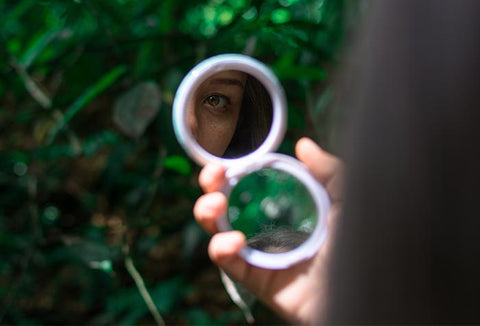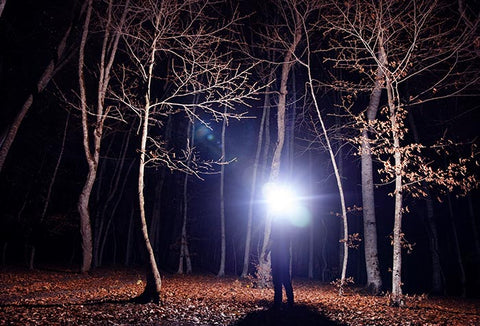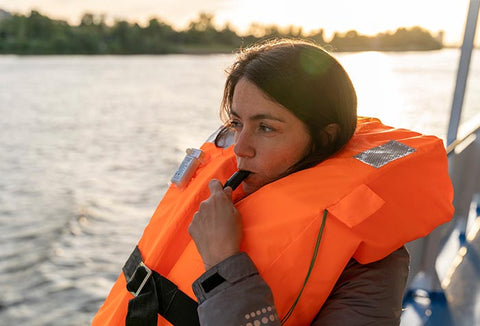
Low-Tech Communication: Signaling Techniques in a Tech-Down Scenario
Enemies of the United States and the West would love nothing more than to knock out our communications channels. Cell towers, Wi-Fi signals... you name it, they want to target it.
If you're not mastering low-tech signaling now, you're putting your future safety at risk.
This article moves beyond the basics and delves into the tactical nuances of non-digital signals. Are you ready?
Groundwork: The Whys and Hows of Low-Tech Signaling
SIGNALING'S STRATEGIC IMPORTANCE
In the absence of modern communications, signaling becomes your lifeline. It’s not merely about attracting attention; it’s a deliberate method to convey specific messages, coordinate movements, and even mislead potential threats.
Whether it's simply coordinating with your group or signaling for rescue, the right technique can make all the difference.
Use hand signals to confirm understanding among your group without a word spoken. Mark your paths discreetly with notches on trees, or rocks placed in specific patterns only your team recognizes.
RELATED READ: Noise Discipline: 7 Top Techniques for Survival Stealth in the Wild
SETTING UP FOR SUCCESS
Before you begin, understand your environment. Are you in dense forest or open desert? What are the weather conditions? Your surroundings will dictate which signals are most effective.
For example, smoke is excellent in open areas, but less visible in thick woods.
The color of the smoke against your backdrop also matters; white smoke is more visible against a green forest, whereas black smoke stands out in snowy environments.
Visual Signals: Mastery Beyond the Basics

MIRROR SIGNALING TACTICS
A signal mirror's effectiveness hinges on its proper use.
- Position yourself facing the sun.
- Hold the mirror close to your face, aiming the reflected light at your hand.
- Slowly adjust until the light points towards your target.
Practice this technique to send specific light flashes in Morse code, ensuring precise communication over long distances.
For subtler communication, angle your mirror to reflect sunlight onto a nearby surface—such as the underside of a canopy or a rock face—avoiding direct detection.
CONTROLLING SMOKE SIGNALS
Different materials produce varied smoke. Green vegetation creates white smoke, while rubber produces black.
For signaling, build a fire with dry materials, then suddenly cover it with greenery to create billowing white smoke.
Learn to create bursts of smoke: three puffs traditionally signal distress. Control the amount of smoke by using damp materials to smother the fire temporarily, then removing them to release a puff of smoke.
CRAFTING GROUND-TO-AIR SYMBOLS
These symbols need to be large and contrasted against the ground. Use logs, rocks, or create trenches to form "SOS" or other recognized distress signals.
Each part of the symbol should be at least three feet wide and eighteen feet long to be visible from the air.
For increased visibility, add materials like brightly colored clothing or reflective items to your symbols. This will catch the light and draw even more attention.
Audible Signals: Tuning in to Advanced Techniques
DEVELOPING WHISTLE CODES
A whistle can be heard farther than the voice, and specific patterns can convey different messages.
Establish a code with your group. Practice short and long blasts, and combinations of both, to represent complex messages. These codes can be based on Morse, but simplified for ease of memory and speed of use.
Adjust the volume of your whistle blasts depending on the range you need to cover; softer for short range, louder for distance.

DRUM PATTERNS FOR DISTANCE
A hollow log or even the bottom of a metal pot can serve as a drum.
Rhythmic beats can relay messages: two beats for "look here," three for "danger." Practice consistent rhythms and intervals. They must be distinct enough to not be confused with the random noises of the wilderness.
In the absence of a drum, you can also use the butt of your knife against a tree or another hard surface to create a sharp sound that carries.
RELATED READ: Advanced Bushcraft Knife Skills: Essential Techniques for Wilderness Survival
NATURAL SOUND AMPLIFICATION
Sometimes, you can use what nature provides. A hollow tree can amplify your whistle or drum. Wind direction can carry sound—use it to your advantage.
Observe the patterns of natural sounds like bird calls, and learn to mimic them. This can help you create a signal that blends in, yet stands out to those who know.
Clapping two stones together can also generate a sharp sound that resembles wood chopping, a familiar human sound that can signal your presence without raising alarm.
Signaling with Light: The Tactical Edge

MORSE CODE VIA FLASHLIGHT
Familiarity with Morse code allows for detailed nighttime communication. A flashlight turned on and off can represent the dots and dashes.
The key is consistency and pauses; the dot is the brief flash, the dash is a longer hold. Regular practice will help you and your team become fluent.
To reduce the visible range of your flashlight while preserving its signal capability, partially obscure the lens with tape or cloth, allowing only a sliver of light to escape.
STARLIGHT SIGNALING
This method requires starlight scopes: night vision devices capable of detecting minimal light sources.
Using infrared flashlights invisible to the naked eye, you can communicate over distances without revealing your position to the unaided eye. This method requires prior coordination and equipment familiarization.
For a low-tech alternative, use a covert light source—like glow sticks—which can be shielded and revealed only in the direction of the intended viewer.
FIRE AS A COVERT SIGNAL
A fire’s visibility can be controlled by geography.
A fire at the bottom of a deep pit, covered with a tarp except for an exhaust vent, can remain hidden until you remove the cover to send a quick burst of flame and smoke skyward. This technique is ideal for signaling aircraft while minimizing long-term visibility.
To extinguish the signal fire quickly, have a pre-prepared cover or water source ready to smother the flames.
RELATED READ: Master Class in Fire Science: Different Ignition Techniques in Diverse Environments
Tools for the Trade: Building a Low-Tech Signal Kit
SIGNAL MIRROR
Choose a compact, durable signal mirror with a sighting hole for accuracy. Practice using it in various light conditions to become adept at sending precise signals.
A good quality signal mirror can also double as a tool for personal grooming, which is important for maintaining morale in survival situations.

WHISTLES
A loud, pea-less whistle is invaluable. It doesn't freeze in cold climates and can produce a consistent, piercing sound that can be heard over long distances.
Opt for a whistle with multiple pitch levels, which can convey more complex messages.
FLASHLIGHTS AND STARLIGHT SCOPES
Select flashlights with a signaling mode, if possible.
For night vision, starlight scopes should be lightweight and have a long battery life. Understand their operation thoroughly.
To practice light discipline, work on sending signals in short, controlled bursts to prevent detection.
Mastering Low-Tech Communication
By incorporating these detailed techniques into your survival skillset, you enhance your ability to communicate effectively in any scenario where high-tech options fail.
This article provides a framework to build upon, ensuring you're equipped for clear signaling in even the most demanding environments.
